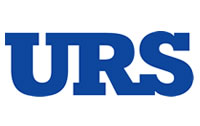Retention… Who’s most likely to be looking for the exit at your plant? The answer may surprise you.
In 1981, The Clash had a hit with “Should I Stay or Should I Go?” In the workplace, people most often leave to get away from a boss they don’t like or respect. Sometimes they leave to have a better work-life balance, and sometimes they leave for better pay and benefits. Retention is very important to quality and productivity; it’s also an indicator of the culture.
In previous columns, we showed a relationship between leader motivation levels and the amount of leadership training these employees received. The data showed that the more leadership training obtained, the more motivated leaders reported to be. However, the data indicates that about 54% of managers and 45% of supervisors do not get adequate leadership training.
This month, we look at workers’ inclination to stay or to go relative to their motivation scores. Our Plant Services Leadership Survey asked, “Do you plan to stay with your organization for the foreseeable future?”
First, some good news. Across all four roles considered (senior manager, manager, supervisor, and team member), 81% of all respondents indicated they intended to stay for the foreseeable future. But that still means that nearly one in five predicts leaving in the foreseeable future. Why is that potentially a problem? Experts suggest a target for turnover of 10% or less per year. Turnover of motivated and productive people tends to hurt an organization more than losing unmotivated and unproductive people.
Senior managers had the lowest percentage (8%) of people intending to leave. Those who intended to stay had an average motivation score of 167, whereas those intending to leave had an especially low average motivation score of 81.
Managers had the highest percentage of respondents planning to leave (29%) with motivation scores of 152 for those staying and 135 for those leaving. Maybe managers looking to leave don’t see a path for advancement, or perhaps they want to get away from a senior manager who has no intention of leaving anytime soon.
In the survey, we also asked team members, “Do you expect to be a supervisor at some point?” About 42% said they do; their average motivation score was 16 points higher than the overall team-member average. And although only 7% indicated they expect to be made a supervisor within the next two years, the average motivation score for this group was 42 points higher than average team-member motivation scores! About half (51%) indicated they never intend to be a supervisor; this group’s average motivation score was 19 points lower than the team-member average motivation score.
What does all this mean? First, motivation scores provide insight into the likelihood of turnover. Second, there may be a “tipping point” at or just below a motivation score of 140 that causes an inversion – when motivated people begin looking for the exit. I recommend you measure motivation and take actions to improve it by improving how people are led.
Contact Alidade MER for in-plant Productive Leadership programs. Our program includes pre-surveys to baseline motivation levels, time spent with the managers of attendees, two days of Productive Leadership knowledge transfer, and a post-survey to show changes in motivation after two to three months of post-program leadership implementation. Contact us at [email protected], or by phone at (321) 773-3356.


















